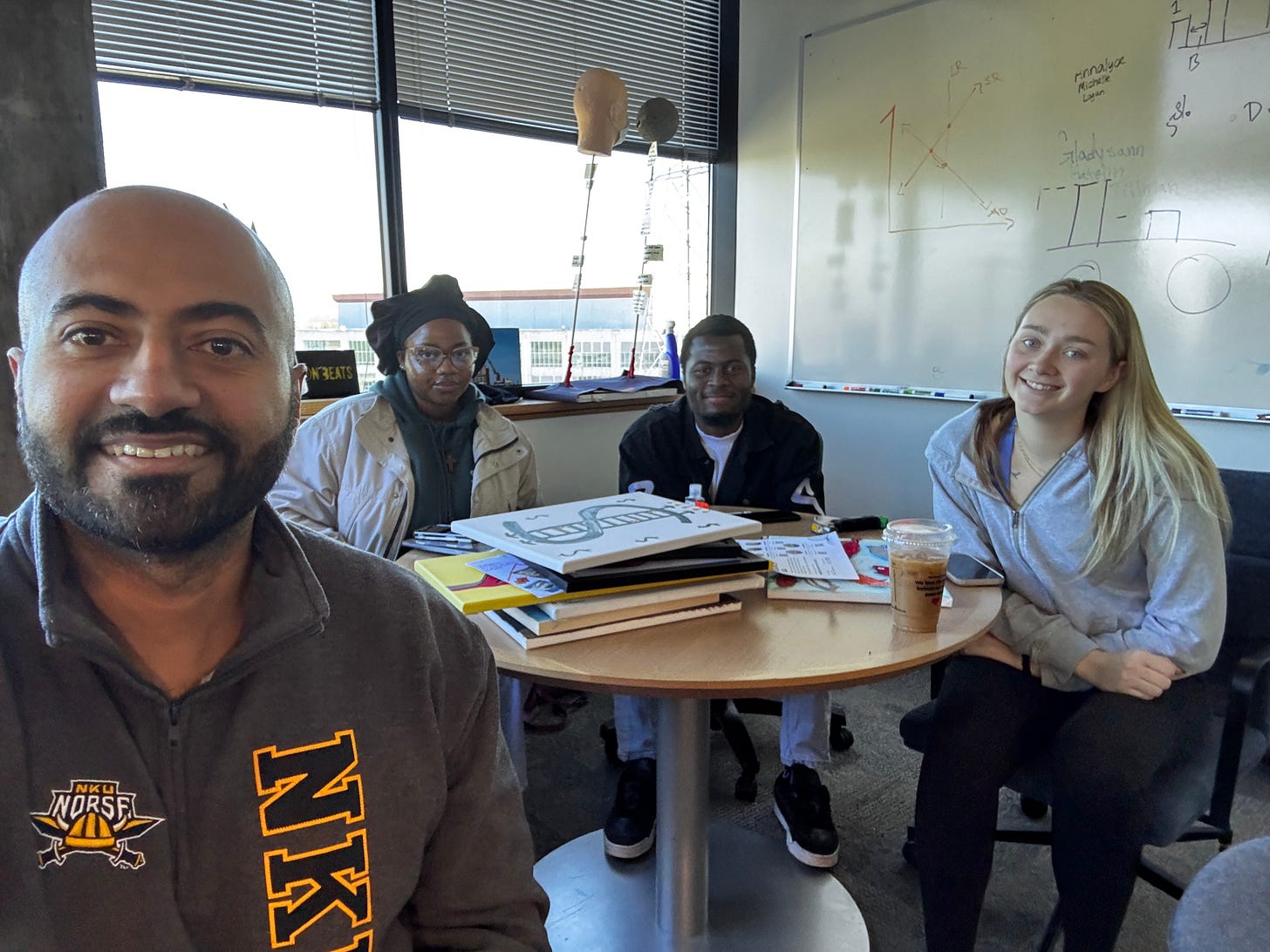Reimagining Academic Spaces
Words Matter
There's a beautiful problem in my corner of academia: students won't leave my office – and I couldn't be happier! This development has led me to reflect deeply on how we structure faculty-student interactions and what it means to create genuine community spaces within academic settings.
Rethinking "Office Hours"
The term "Office Hours" has always felt inadequate and unnecessarily formal. It suggests a transactional relationship: students arrive with questions, receive answers, and leave. Many students view these hours with trepidation, worried about interrupting their "busy professor's work time" or feeling the weight of that anxious knock on the door.
Creating a Third Space- Discussion Hours
What's emerged in place of traditional office hours is something far more valuable: a third space. My discussion hours have organically evolved into a community hub where:
Current and former students freely intermingle
Conversations flow naturally between academic and personal topics
Students support and learn from each other
I serve more as a facilitator than an authority figure
The magic happens when students arrive with specific questions about coursework but stay for the community. They become part of ongoing discussions beyond classroom content, creating connections beyond their time in my courses.
Looking Forward
This transformation has highlighted several key insights about student engagement:
Physical spaces within academia can and should serve multiple purposes
Students deeply value informal mentorship opportunities
Peer-to-peer learning flourishes in relaxed environments
Building a community doesn't require formal programming – sometimes, it just needs space and permission
Building Academic Community
Consider reimagining your own office hours discussion hours. What would it look like to create a space that welcomes lingering conversations? How might we better signal to students that they aren't interrupting but rather contributing to a vibrant academic community?
Share Your Thoughts
I'd love to hear from colleagues and students about their experiences with office hours and community building. What approaches have worked in their spaces? What challenges have they encountered?




